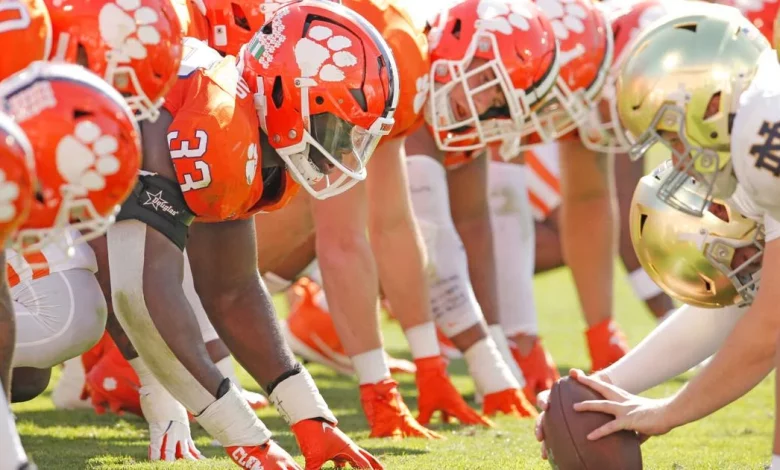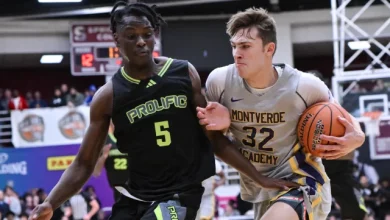Notre Dame and Clemson have struck a 12-year deal to play each other annually in football, according to

Notre Dame and Clemson have agreed to an annual, long-term football scheduling partnership, sources tell Yahoo Sports, as the Irish and Tigers work to increase the frequency of big-brand matchups.
The two schools struck a 12-year agreement to meet annually on the football field, a series that is set to begin in 2027. Notre Dame’s schedule — it plays five ACC games each season under an affiliation agreement — could get another boost. As Yahoo Sports reported earlier this spring, the Irish are expected to play Miami and Florida State more regularly as part of the ACC rotation.
The ND-Clemson series, while made independently between the two schools, will count toward Notre Dame’s five annual ACC games during years in which those games are already in the league’s scheduling rotation. However, it provides Clemson with a highly billed non-conference game that works independent of the ACC framework.
Clemson and Notre Dame were already scheduled to meet in 2027 (at Clemson), 2028 (at Notre Dame), 2031 (at Clemson), 2034 (at Notre Dame) and 2037 (at Clemson). The annual series will require a change to the ACC’s future rotational schedules involving the Irish.
The scheduling strategy — pitting the conference’s biggest brands against each other more often — comes on the heels of the league settling with Florida State and Clemson, and following Notre Dame’s march to the national championship game. The months-long battle between the two schools and the conference ended with them agreeing to remain in the conference under a new revenue distribution structure and more clarity around the grant-of-rights penalty.
Meanwhile, the conference is expected to provide more flexibility on the ACC scheduling rotation for its affiliated member, Notre Dame.
Notre Dame officials have publicly stumped for the ACC to arrange the Irish schedule in a way that features more of the conference’s big brands.
In January, Notre Dame athletic director Pete Bevacqua told reporters that he’d welcome playing more of the league’s big brands, even citing Clemson as “that type of [opponent] I’d love to play every year.”
The scheduling agreement provides the Irish a boost to a strength-of-schedule metric that is expected to be more of a priority for the CFP selection committee in future years. By 2026, Notre Dame will be one of only two FBS independents (UConn is the other).
Notre Dame and Clemson administrators have been in deep discussions for months over the deal. The game provides the Tigers a marquee matchup at a time when television viewership converts to real dollars.
FSU, Miami and Clemson are expected to be the top beneficiaries of the conference’s new revenue-distribution structure. A portion of the league’s media rights will be unevenly distributed based on a media value metric. Those football and basketball schools generating the most television viewers annually are expected to receive a bigger cut of the revenue pie.
The new revenue proposal was seen as a solution — perhaps temporarily — to avoid any court decision over the validity of the grant of rights. A potential loss in court that immediately opens the grant of rights could have a catastrophic impact not only on the ACC but other conferences, setting a precedent for all schools to break what were at first thought to be binding agreements.
The changes come after the conference approved last year what it describes as a “success initiative,” a system that distributes more revenue to teams that excel in football and basketball. The initiative rewards high-performing football programs as much as $25 million if all success benchmarks are met, such as qualifying for a bowl game, finishing inside the top 25 and advancing through the College Football Playoff.
The initiative is an attempt for commissioner Jim Phillips and league administrators to reward winning in a way that helps close the financial gap between the ACC and the two richest conferences: the SEC and Big Ten. The gaps in television distribution — a primary reason for FSU and Clemson’s lawsuits — could soar to more than $30 million per school within the next two years.









